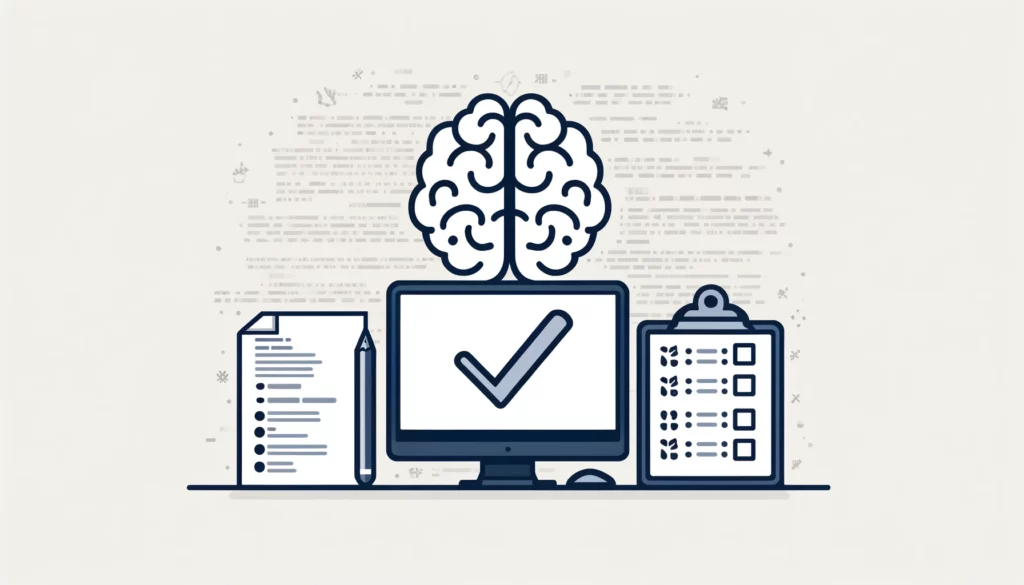Evaluate LLM models using semantic similarity
- Aguru

Introduction
The landscape of large language models (LLMs) is rapidly evolving, offering numerous opportunities to enhance the performance and cost-efficiency of AI applications. However, the variety of available models also complicates the task of selecting the most suitable one for specific business needs. Various evaluation methods are available, including human evaluation and automatic evaluation using benchmarks and metrics such as ROUGE, BLEU, F1, semantic similarity to a gold standard, and LLM-as-a-judge. Each of these evaluation frameworks has its own advantages and inherent biases.
In this context, our LLM Router adopts the semantic similarity approach as a means to reliably assess the output quality of different LLM models. Here’s an overview of how our evaluation process is implemented.
How we measure the semantic similarity
We employ BERTScore to quantify semantic similarity, which is pivotal in comparing the output quality of various LLMs. BERTScore is a metric that evaluates the semantic similarity between a LLM model’s output and a gold standard. Semantic similarity scores range from 0 to 1, where 1 signifies perfect parity with the gold standard. This gold standard can be a business’s current model, a universally acclaimed model like GPT-4, or a set of ‘reference responses’ provided by the business, encapsulating their ideal answers to various prompts.
Process of evaluating LLM output quality
- Collect responses: Our LLM Router begins by gathering responses from a variety of LLM models that you have selected. This is a critical first step that differs from traditional benchmarks because it uses your actual queries instead of relying on synthetic datasets. This ensures that the assessment reflects real-world use and the specific nuances of your applications.
- Understand semantic density: It automatically structures your prompts into semantically similar clusters, each representing a distinct use case. It then assesses the semantic density and noise levels across these clusters. High levels of noise or low semantic density indicate sparse queries, which significantly compromise the effectiveness of the LLM output quality assessment. In instances where queries are too sparse for a reliable assessment, there is a high likelihood that the Router will default to using the gold standard model for all queries. This ensures a consistently high level of output quality, when faced with insufficient semantic density for effective quality evaluation.
- Calculate BERTScores: BERTScore is used here to measure the semantic similarity between the responses from the gold standard LLM model and those from other LLM models. Each model receives a BERTScore at the prompt level, and an average BERTScore is calculated at the cluster level. This structured approach provides a clear and straightforward understanding of how different LLM models are likely to perform in response to your specific queries.
Why Semantic Similarity for LLM quality evaluation?
Our decision to use semantic similarity as the quality metric in our LLM Router is based on extensive validation and research already conducted within the AI community.
For example, here are two papers that we have carefully studied and analyzed:
This approach taps into the collective expertise and established benchmarks that AI professionals have developed, which affords a more efficient evaluation process. For example, GPT-4 is widely recognized in various benchmarks as a top-performing model across a range of applications, eliminating the need for its reassessment. Instead, our focus shifts to identifying models that match GPT-4 in specific tasks through semantic similarity comparisons of LLM outputs.
Advantages of the semantic similarity approach
- Reliability and transparency: While all evaluation methods have inherent biases, semantic similarity provides a quantifiable, clear metric that is often more transparent and reliable than subjective assessments such as those from the LLM-as-a-judge approach.
- Accuracy and customization: When businesses can provide ‘reference responses’, these can serve as the perfect gold standard, aligning evaluations closely with specific business use cases. This setup will ensure that model assessments are not only accurate but also highly tailored to individual business contexts.
- Cost and response speed optimization: This method can help quickly identify LLM models that deliver comparable quality at lower costs or with faster response times, helping boost your AI applications performance.
Round up
You now have a better understanding of our approach in assessing LLM output quality. We encourage you to take the next step and initiate a free trial. This will allow you to experience firsthand how our LLM Router can work efficiently with your specific datasets.
